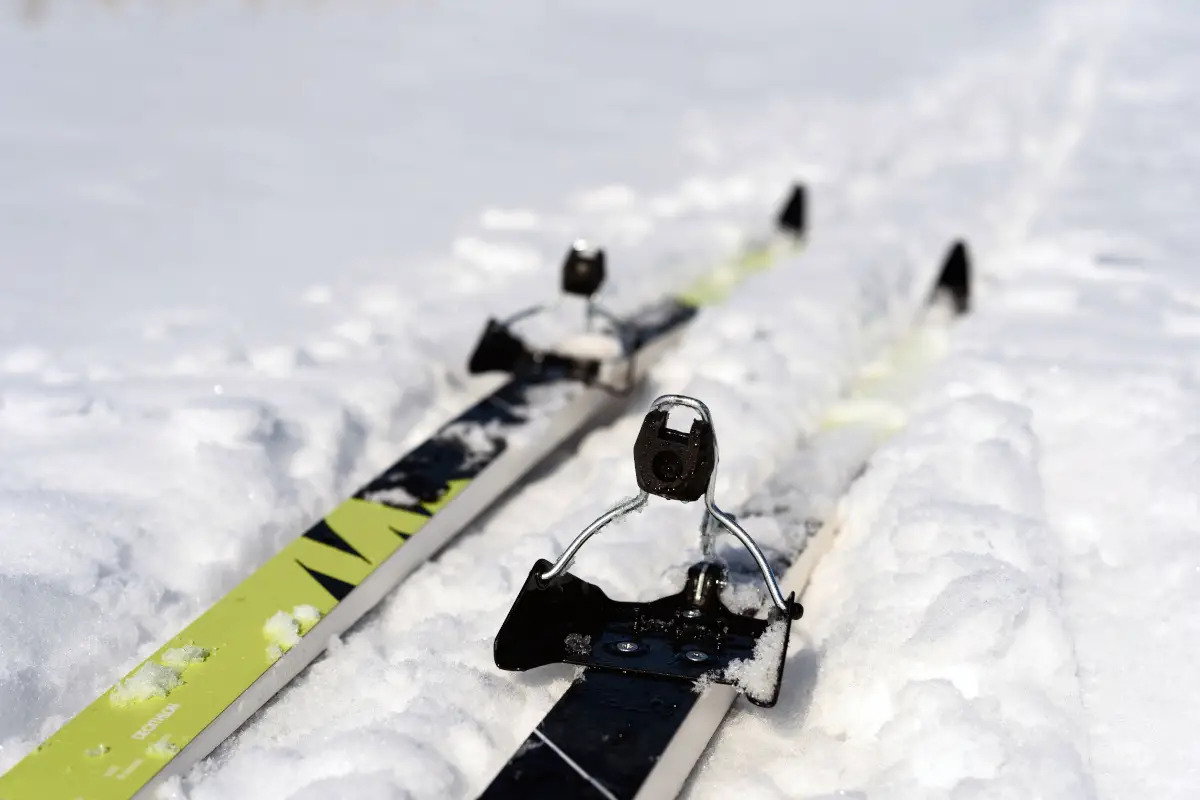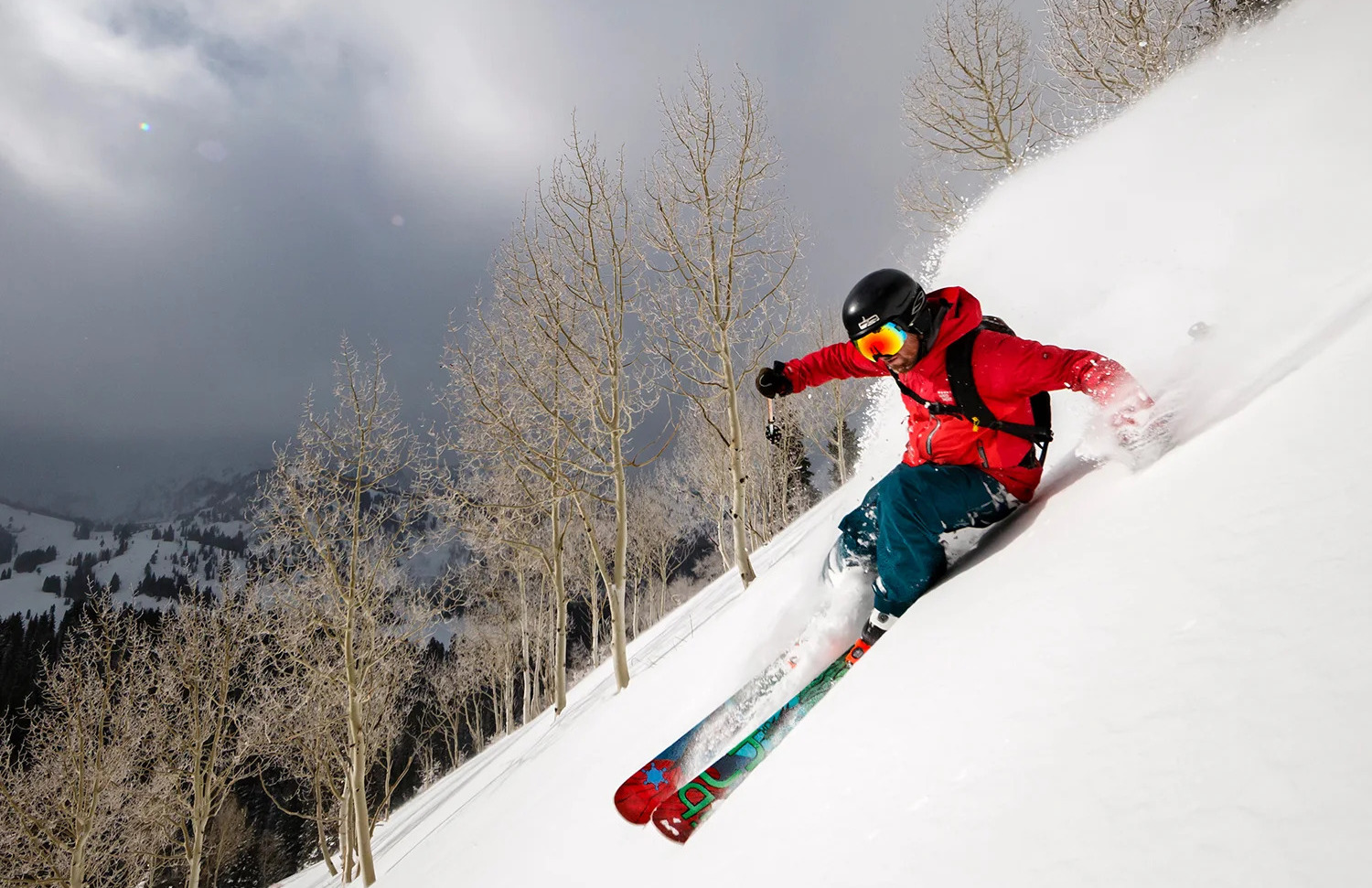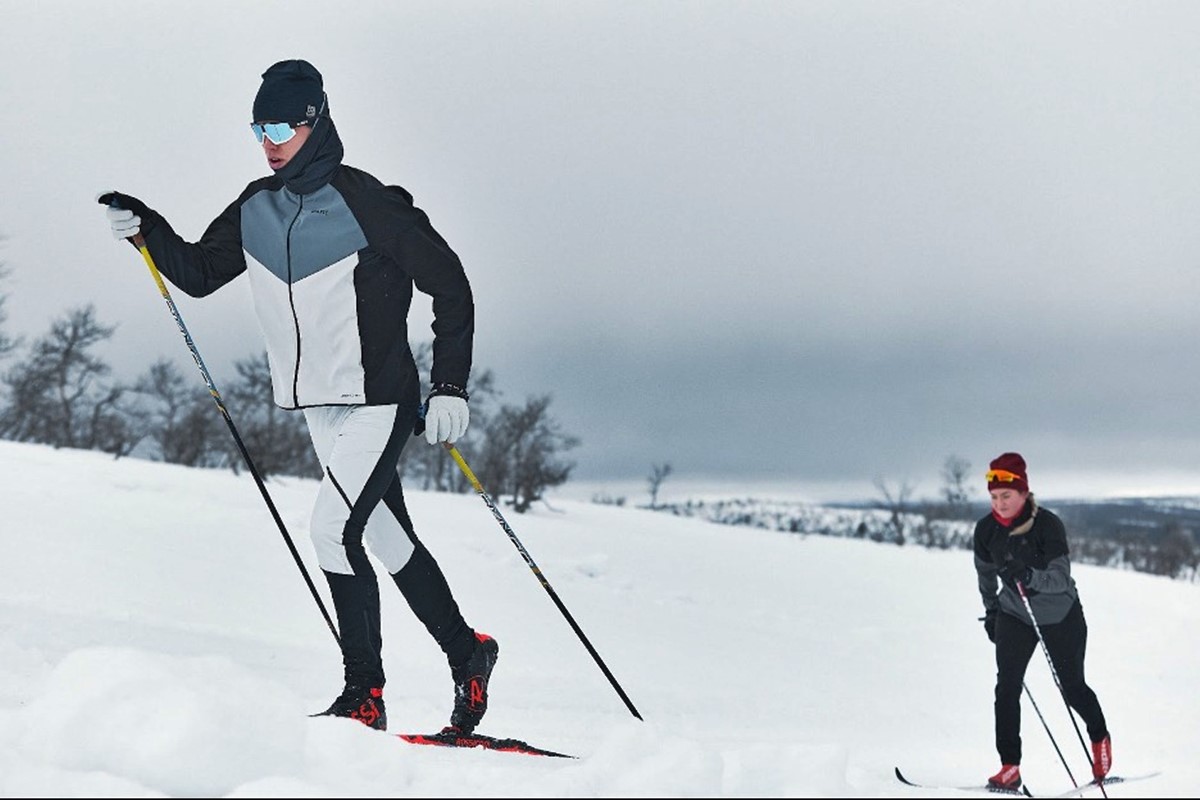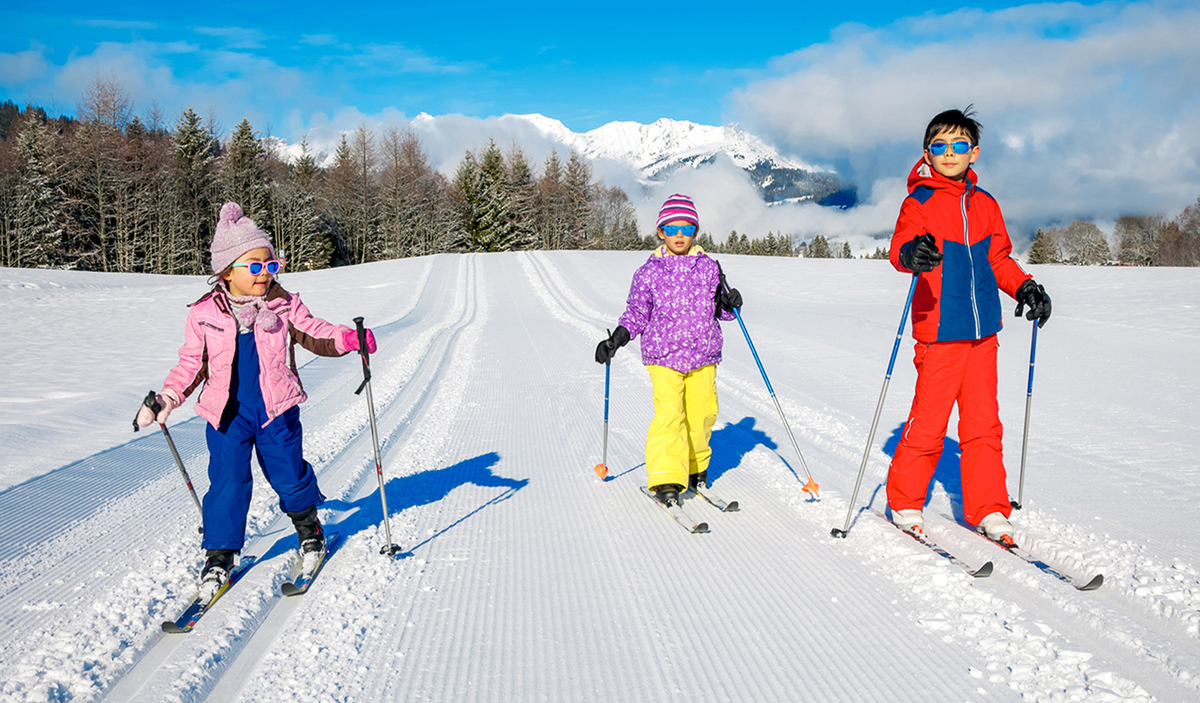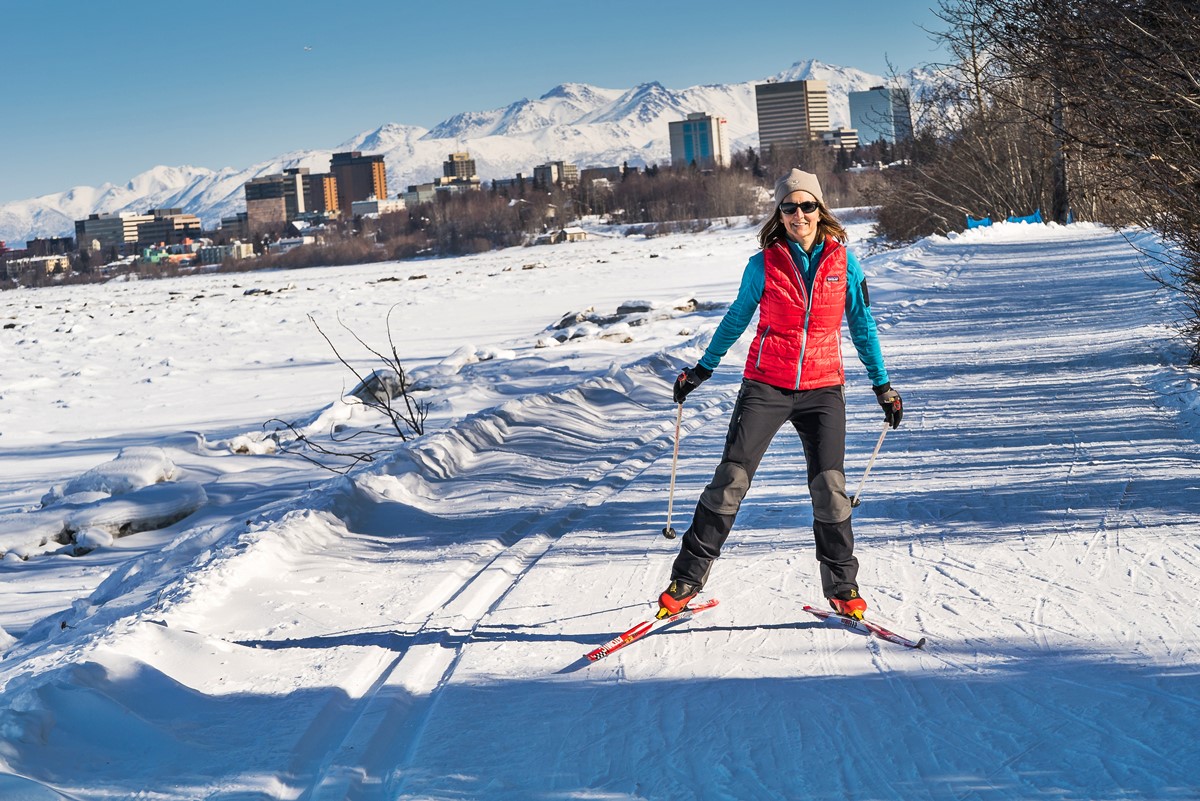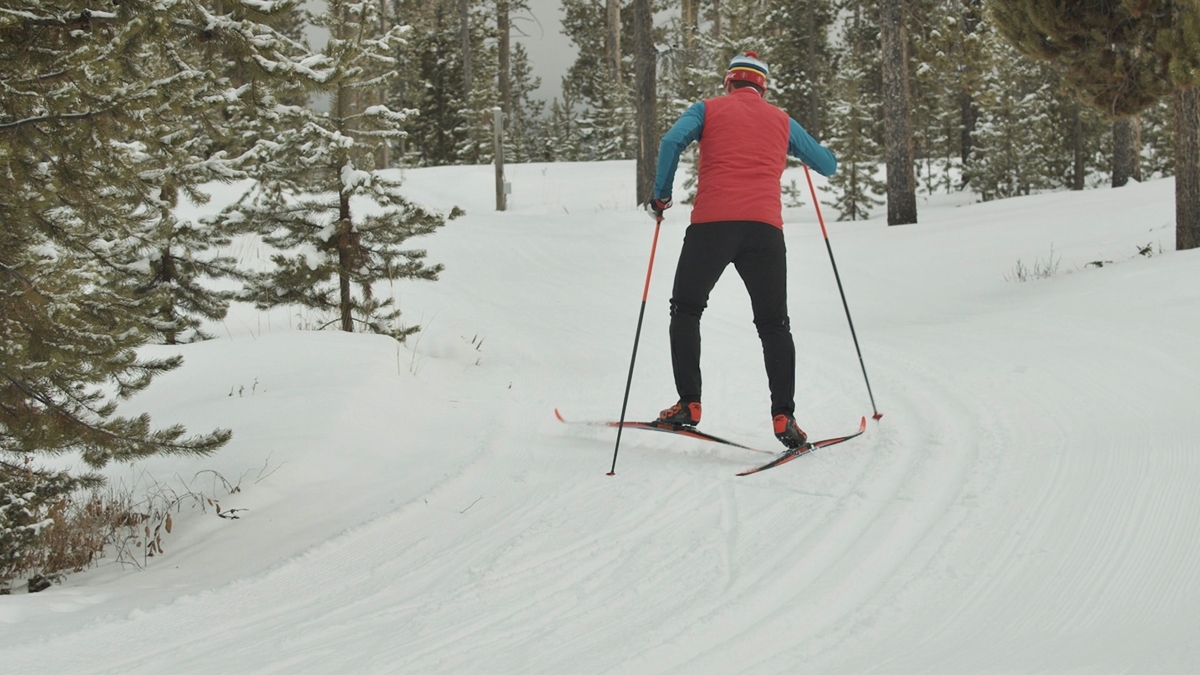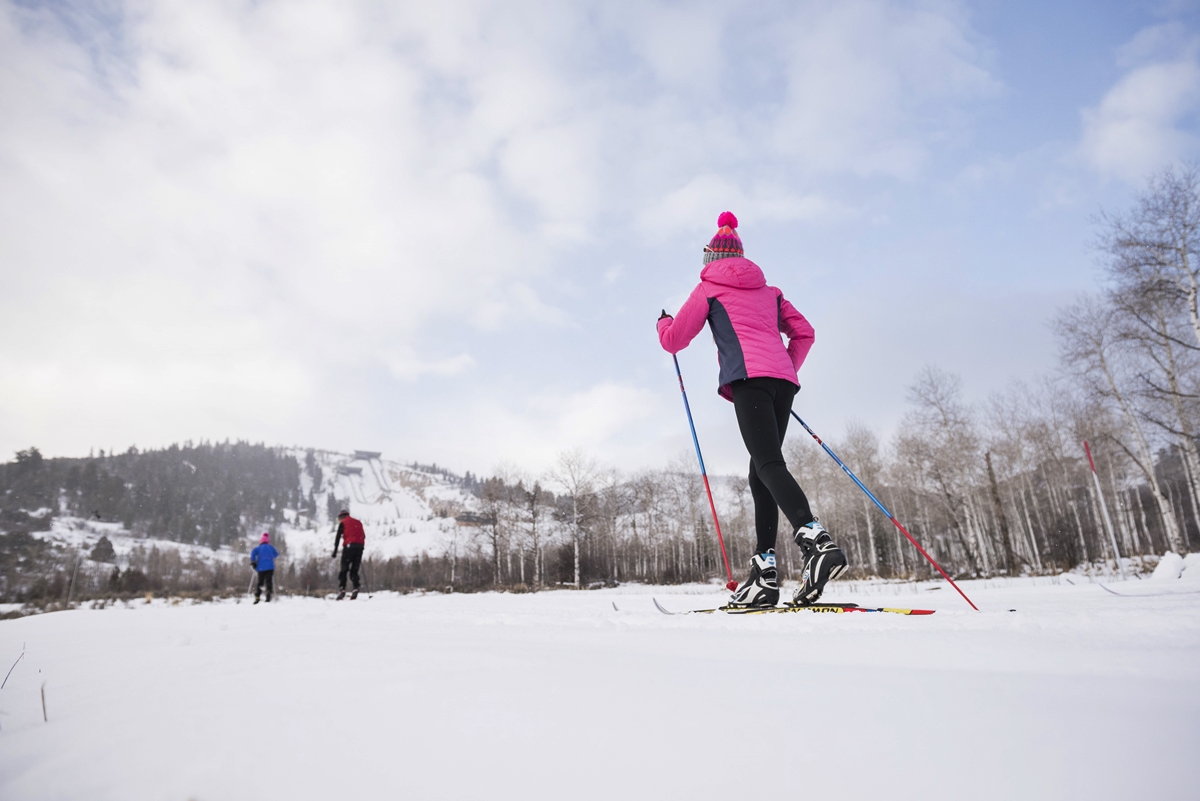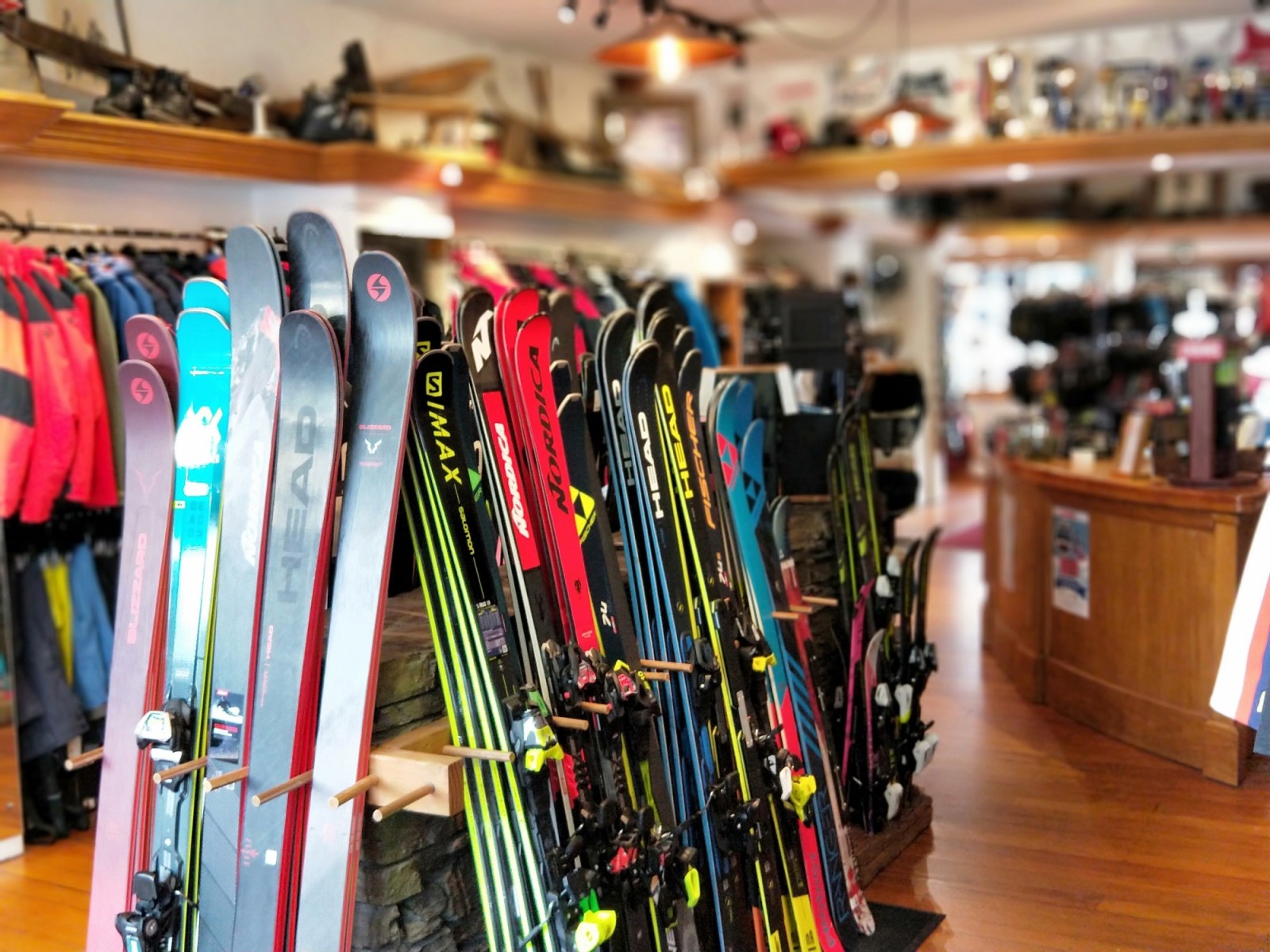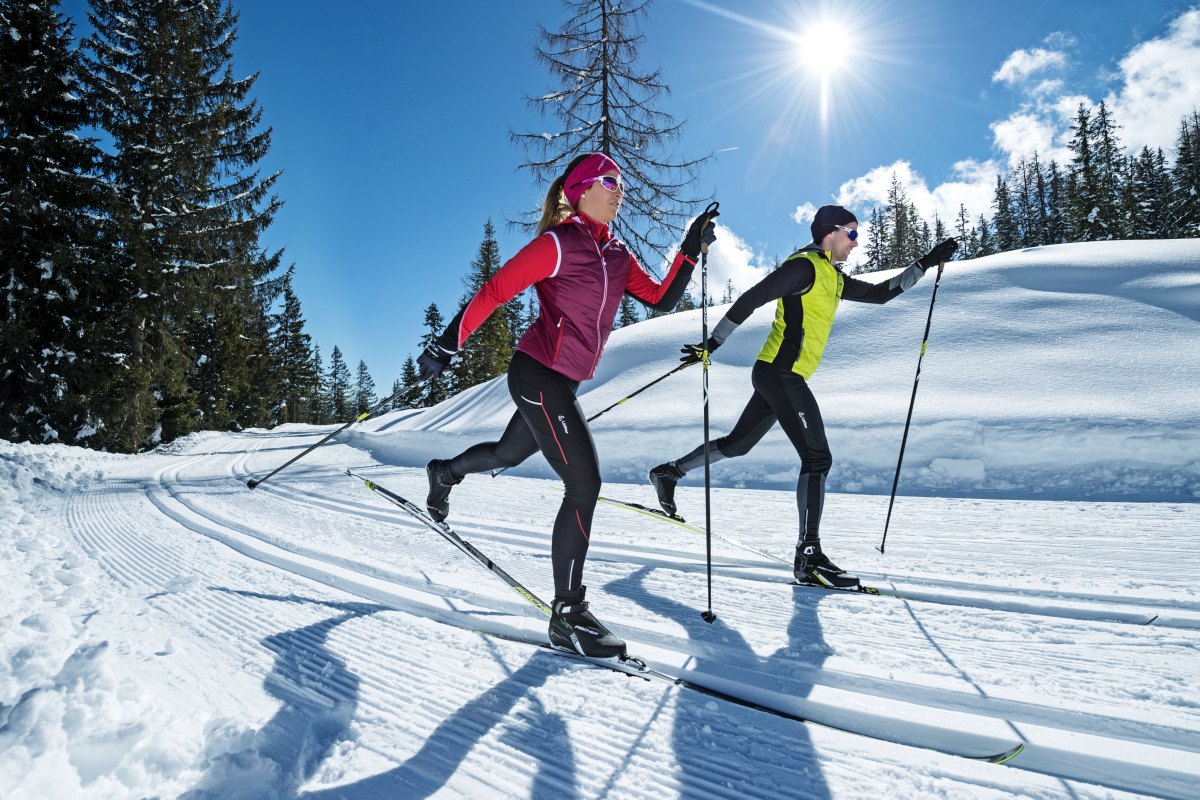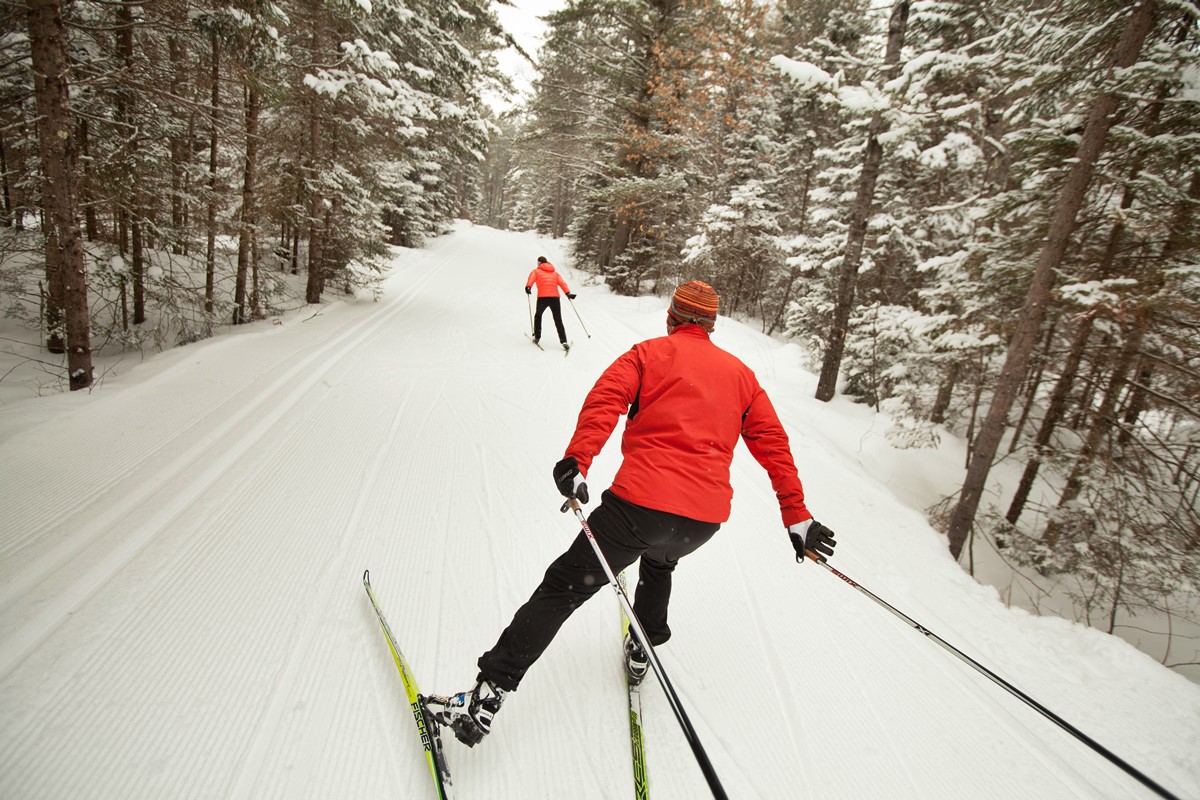Home>Misc>Featured>What Kind Of Cross Country Ski Bindings Do I Have
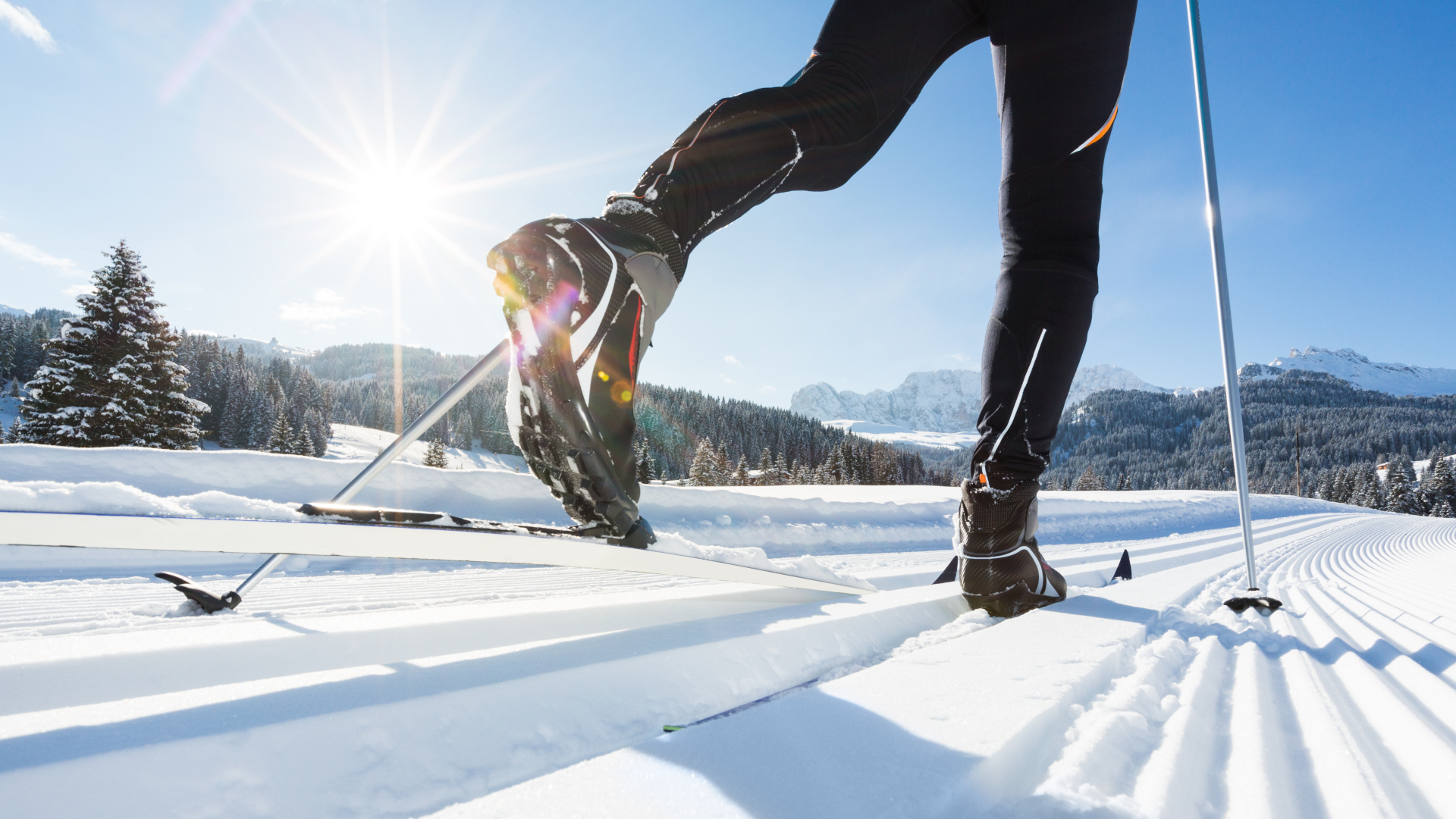

Featured
What Kind Of Cross Country Ski Bindings Do I Have
Modified: August 18, 2023
Discover the different types of cross country ski bindings and find out which ones are featured. Learn more about your ski bindings today.
Introduction
When it comes to cross country skiing, having the right equipment is crucial for a successful and enjoyable experience on the trails. One important component of your cross country ski setup is the bindings. Cross country ski bindings are the interface between your boots and the skis, providing stability, control, and power transfer as you glide through the snow.
But with so many different types of cross country ski bindings on the market, it can be confusing to know what kind you have or what kind you need. Understanding the different types of bindings and their features will help you make informed choices, whether you’re looking to upgrade your current setup or purchase new equipment.
In this article, we will explore the most common types of cross country ski bindings, including the NNN (New Nordic Norm) bindings, SNS (Salomon Nordic System) bindings, and NIS (Nordic Integrated System) bindings. We will describe the features and benefits of each type, as well as any compatibility issues you may encounter when combining bindings with boots or skis from different manufacturers.
By the end of this article, you will have a clearer understanding of the different types of cross country ski bindings and how they can enhance your skiing experience. So, let’s dive in and discover what kind of cross country ski bindings you have!
Common Types of Cross Country Ski Bindings
When it comes to cross country ski bindings, there are several common types that you’ll come across. Each type has its own unique features and advantages, catering to different skiing styles and preferences. Let’s take a closer look at the three most popular types of cross country ski bindings:
- NNN Bindings (New Nordic Norm): The NNN bindings are one of the most widely used and trusted types of cross country ski bindings. They are known for their lightweight design and ease of use. The NNN system features two metal rods on the sides of the binding, which securely hold the boot in place. NNN bindings provide excellent stability and control, making them suitable for both classic and skate skiing techniques. They are also compatible with a wide range of boots, offering versatility and convenience for skiers of all skill levels.
- SNS Bindings (Salomon Nordic System): The SNS bindings, developed by Salomon, are another popular choice among cross country skiers. Similar to NNN bindings, the SNS system also uses two metal rods on the sides of the binding to secure the boot. However, SNS bindings have a slightly different shape and mechanism, making them incompatible with NNN boots. The advantage of SNS bindings is their enhanced power transfer, providing skiers with increased efficiency and responsiveness. They are ideal for skiers who prioritize speed and performance.
- NIS Bindings (Nordic Integrated System): The NIS bindings are a relatively newer addition to the cross country skiing world. Developed by Rottefella, these bindings feature an integrated plate on the ski, allowing for tool-free mounting and adjustment. One of the key advantages of NIS bindings is their ability to optimize the flex and glide of the ski, enhancing overall performance. Additionally, NIS bindings are compatible with both NNN and SNS boot systems, giving skiers more flexibility in choosing their equipment.
These three types of cross country ski bindings are widely available and offer a range of features to suit different skiing styles and preferences. It’s important to note that each type has its own specific compatibility requirements, so it’s essential to ensure that your boots and skis are compatible with the binding system you choose. Now that we’ve covered the common types of cross country ski bindings, we can delve deeper into each type to understand their features and benefits.
Description of NNN Bindings
NNN bindings, which stands for New Nordic Norm, are a popular type of cross country ski bindings known for their lightweight design and ease of use. The NNN system features two metal rods on the sides of the binding, which securely hold the boot in place. This design provides excellent stability and control, making them suitable for both classic and skate skiing techniques.
One of the key advantages of NNN bindings is their compatibility with a wide range of boots. Whether you have NNN-compatible boots or Rottefella NNN BC boots, they can be used with NNN bindings, providing skiers with versatility and convenience. This flexibility in boot compatibility makes NNN bindings a popular choice among beginners and experienced skiers alike.
NNN bindings also offer the option for manual step-in or automatic step-in mechanisms, depending on your preference. Manual step-in bindings require the skier to use their hands to secure the boot in the binding, which can be beneficial for those who prefer a more hands-on approach. On the other hand, automatic step-in bindings allow the skier to simply step into the binding without the need for any manual adjustments, offering convenience and ease of use.
Another notable feature of NNN bindings is their secure and reliable connection between the boot and ski. The metal rods on the sides of the binding provide a sturdy and stable base, ensuring excellent power transfer and responsiveness. This enhances the skier’s control over the skis, allowing for more efficient and fluid movements on the trails.
Overall, NNN bindings are a versatile and user-friendly option for cross country skiers. Their lightweight design, compatibility with various boot types, and secure connection make them an excellent choice for skiers of all skill levels. Whether you’re a beginner looking for your first pair of cross country ski bindings or an experienced skier seeking reliable equipment, NNN bindings provide the performance and convenience you need to fully enjoy your time on the snow.
Description of SNS Bindings
SNS Bindings, short for Salomon Nordic System, are a popular type of cross country ski bindings developed by Salomon. These bindings offer a unique design and functionality, providing skiers with enhanced power transfer and responsiveness on the trails.
One notable feature of SNS bindings is their two metal rods on the sides of the binding, similar to NNN bindings. These rods securely hold the boot in place, ensuring stability and control during skiing. However, it’s important to note that SNS bindings are not compatible with NNN boots, as they have a slightly different shape and mechanism.
The key advantage of SNS bindings lies in their power transmission capabilities. The design of these bindings allows for efficient energy transfer from the skier’s boot to the ski, resulting in improved speed and performance. This makes SNS bindings particularly well-suited for skiers who prioritize speed and competitive skiing.
Another feature that sets SNS bindings apart is the option for a manual step-in or a manual step-in with a quick release mechanism. Manual step-in bindings require the skier to use their hands to secure the boot in the binding, providing a secure and customized fit. The quick release mechanism allows for easy removal of the boot from the binding, ensuring convenience and efficiency.
SNS bindings are also available in different stiffness levels to accommodate different skiing styles and preferences. Stiffer bindings offer more stability and power transfer, making them ideal for experienced skiers and those seeking better performance. On the other hand, softer bindings provide enhanced flexibility and a more forgiving feel, which can be beneficial for beginners or those who prefer a more relaxed skiing experience.
Overall, SNS bindings offer skiers a combination of performance, responsiveness, and power transfer. Their unique design and compatibility requirements make them a popular choice among skiers who value speed, control, and competitive skiing. If you’re looking to take your cross country skiing to the next level, SNS bindings may be the right choice for you.
Description of NIS Bindings
NIS bindings, which stands for Nordic Integrated System, are a relatively newer addition to the world of cross country ski bindings. Developed by Rottefella, these bindings feature an integrated plate on the ski that allows for tool-free mounting and adjustment. The NIS system offers several advantages, including optimized flex and glide performance.
One of the key features of NIS bindings is their ability to fine-tune the flex of the ski. The integrated plate on the ski allows for adjustments to position the binding in the optimal location for the skier’s weight and skiing style. This customization helps to optimize the performance of the ski, providing a better flex pattern and improved gliding characteristics.
NIS bindings offer convenience and ease of use, with tool-free mounting and adjustment options. Skiers can easily attach or remove the bindings from the integrated plate on the ski without the need for additional tools. This makes NIS bindings a popular choice for skiers who want to quickly switch bindings between different skis or make on-the-go adjustments while on the trails.
Another advantage of NIS bindings is their compatibility with both NNN and SNS boot systems. This means that skiers have the flexibility to choose their preferred boot type without being limited by binding compatibility. Whether you have NNN-compatible boots or SNS-compatible boots, they can be used with NIS bindings, providing versatility and convenience when it comes to choosing your equipment.
It’s important to note that NIS bindings are not only compatible with NNN and SNS boots but also with a range of ski widths. This makes them suitable for various skiing styles and conditions, from groomed trails to backcountry adventures.
In summary, NIS bindings offer skiers the advantages of tool-free mounting, customization of ski flex, and compatibility with both NNN and SNS boot systems. This flexibility, combined with the optimized gliding performance, makes NIS bindings a popular choice for cross country skiers looking for convenience, performance, and versatility in their ski equipment.
Compatibility Issues with Bindings
When it comes to cross country ski bindings, compatibility is an important factor to consider. Not all bindings are compatible with every boot or ski, and mismatched equipment can lead to performance issues and potential safety concerns. Let’s explore some of the compatibility issues you may encounter when combining bindings with boots or skis from different manufacturers.
One common compatibility issue is between NNN (New Nordic Norm) and SNS (Salomon Nordic System) bindings and boots. These two binding systems have slightly different shapes and mechanisms, making them incompatible with each other. If you have NNN boots, they will only work with NNN bindings, and the same goes for SNS boots with SNS bindings. It’s important to ensure that you have the appropriate boots that match the binding system you plan to use.
Another factor to consider is the compatibility between the binding and the ski. Different bindings have specific mounting patterns, and not all skis have the same hole pattern for mounting bindings. It’s essential to check the compatibility between the binding and the ski to ensure a proper fit. In some cases, you may need to drill new holes or use an adapter plate to make the binding compatible with the ski.
Additionally, it’s important to consider the compatibility between the binding and the boot sole. Some bindings have specific requirements for boot sole thickness and shape to ensure a secure fit and optimal performance. It’s essential to check the compatibility guidelines provided by the binding manufacturer to ensure that your boots meet the required specifications.
One final compatibility issue to consider is the compatibility between different generations or models of bindings. While bindings within the same system (such as NNN or SNS) are typically compatible with each other, there may be variations in design or features between different generations or models. It’s important to check the compatibility guidelines provided by the manufacturer to ensure that your equipment is compatible.
In summary, compatibility issues can arise when combining bindings with boots and skis from different manufacturers or using incompatible equipment. It’s crucial to ensure that your boots, bindings, and skis are compatible to optimize performance, safety, and overall skiing experience. Always refer to the manufacturer’s guidelines and consult with a knowledgeable professional if you have any doubts or questions about compatibility.
Identifying and Determining your Cross Country Ski Bindings
Identifying and determining the type of cross country ski bindings you have is an important step in understanding your equipment and ensuring compatibility with boots and skis. Here are some methods and indicators to help you identify and determine the type of bindings you have:
- Visual Inspection: Start by visually examining your ski bindings. Look for any branding or logos that may indicate the manufacturer and type of bindings. NNN bindings typically have an “NNN” logo or branding, while SNS bindings may have “SNS” or “Salomon” logos. NIS bindings may have the “NIS” logo or the name of the manufacturer, Rottefella, on the binding plate.
- Check the Boot Sole: Examine the sole of your ski boots. NNN boots usually have a rectangular toe with two grooves on the sides, which correspond to the metal rods on NNN bindings. SNS boots typically have a wider, triangular toe with a single groove in the center, matching the shape of SNS bindings. NIS boots are compatible with both NNN and SNS bindings and may have markings indicating compatibility with both systems.
- Measure the Binding Plate: If you have NIS bindings, you can measure the width of the binding plate on your skis. NIS bindings have a standardized hole pattern that can help determine their compatibility. Measure the distance between the center of the front and rear holes to determine if it matches the NIS standard.
- Consult the Manufacturer: If you’re still unsure about the type of bindings you have, reach out to the manufacturer for guidance. They can provide you with specific information based on the design, model, or serial number of your bindings.
By using a combination of visual inspection, examination of the boot sole, and measurements, you can successfully identify and determine the type of cross country ski bindings you have. This knowledge will help you ensure compatibility with boots and skis, allowing for a seamless and enjoyable skiing experience.
Conclusion
Choosing the right cross country ski bindings is essential for a successful and enjoyable skiing experience. Understanding the different types of bindings, such as NNN, SNS, and NIS, is crucial for determining compatibility with your boots and skis. Each type of binding offers its own unique features and advantages, catering to different skiing styles and preferences.
NNN bindings are known for their lightweight design and compatibility with a wide range of boots, making them a popular choice for skiers of all levels. SNS bindings provide enhanced power transfer and responsiveness, making them ideal for those seeking speed and performance. NIS bindings offer the convenience of tool-free mounting and customization of ski flex, accommodating both NNN and SNS boot systems.
It is important to be aware of compatibility issues that can arise when combining bindings with boots and skis from different manufacturers. Checking the compatibility between bindings, boots, and skis will ensure a proper fit, performance, and safety on the trails. By visually inspecting the bindings, examining the boot sole, and measuring the binding plate, you can identify and determine the type of bindings you have.
Remember to consult the manufacturer for any specific guidelines or inquiries to ensure compatibility and optimal performance. Taking the time to understand your cross country ski bindings will enhance your skiing experience, allowing you to glide with confidence and control on the snow.
